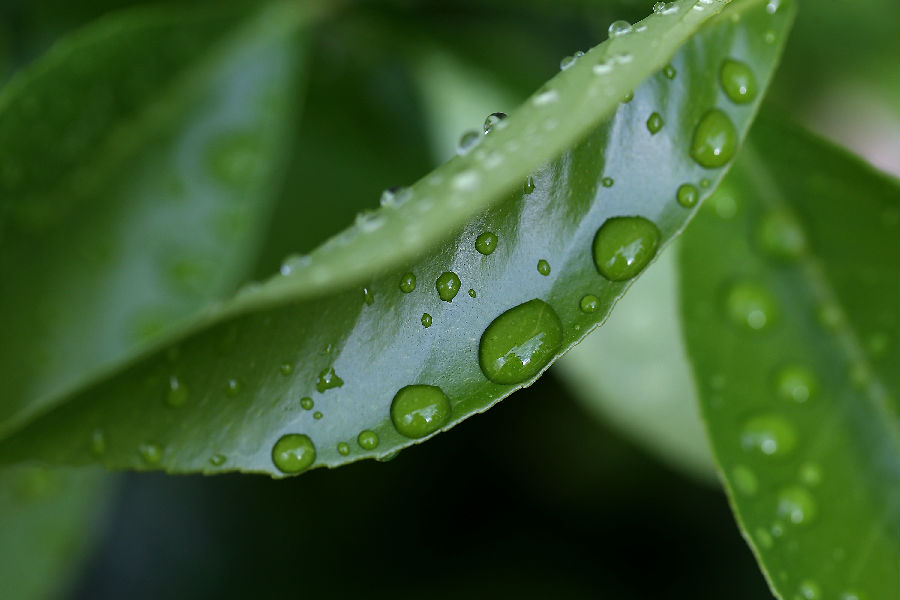Nature boasts some nifty technology. A leaf is one such miraculous machine, able to turn one form of energy into another: it takes in carbon dioxide, plus water, and uses sunlight to convert it all into carbohydrates.
大自然拥有一些奇妙的科技。叶子就是能将一种形式的能量转化为另一种的神奇机器:叶子吸收二氧化碳和水分,并利用阳光将其转化为碳水化合物。
For years, scientists have tried to emulate the process of photosynthesis. Finally, those efforts are blooming. The magazine Scientific American, together with experts from the World Economic Forum, has named the artificial leaf one of the breakthrough technologies of 2017.
多年来,科学家们一直试图模仿光合作用。这些努力终于有了成果。《科学美国人》(Scientific American)杂志与世界经济论坛(WEF)的专家们将人工叶子评为2017年的突破性技术之一。
Laboratory-based efforts are attempting to go one better on nature by generating not plant food but fuels that can be stored for later use. Such projects offer the promise of making new forms of energy while mopping up carbon dioxide, an unwanted greenhouse gas, from the atmosphere. That makes artificial photosynthesis one of the potentially cleanest technologies on the energy horizon.
实验室研究人员正试图比自然更胜一筹:不是生成植物养分,而是产生能够储存起来供以后使用的燃料。这类项目带来了一种前景:在生产新型能源的同时,从大气层吸走二氧化碳这种不受欢迎的温室气体。这使人工光合作用有望成为能源领域最清洁的技术之一。
Daniel Nocera and Pamela Silver, from Harvard University, have taken early steps along this road. Their system — the “leaf” is actually a container — uses a catalyst, activated by sunlight, to split water molecules into hydrogen and oxygen molecules. The container is home to hydrogen-eating bacteria, which feast on the newly liberated molecules plus carbon dioxide to churn out liquid fuel.
哈佛大学(Harvard University)的丹尼尔?诺切拉(Daniel Nocera)和帕梅拉?西尔弗(Pamela Silver)是这条道路上的先行者。他们的系统,或者说“叶子”,实际上是一个容器,该系统利用一种由阳光激活的催化剂,把水分子分解成氢分子和氧分子。这个容器中有以氢为食的细菌,这些细菌吞噬新释放出的氢分子,再加上二氧化碳,来产出液体燃料。
While even the fastest-growing plants manage to convert about 1 per cent of sunlight into food, the Harvard scientists managed an efficiency of 10 per cent when using pure carbon dioxide. The efficiency drops to about 4 per cent when pulling carbon dioxide from the air.
即使是生长最快的植物,也只能将大约1%的阳光转化为养分,而哈佛大学的这两位科学家研发的系统在利用纯二氧化碳时,达到了10%的能量转化效率。不过,如果从空气中抽取二氧化碳,效率就会下降至约4%。
The sun is shining for solar fuels more widely. The US Department of Energy runs a specialist hub, the Joint Center for Artificial Photosynthesis, that brings together a host of academic institutions such as Caltech and the Lawrence Berkeley National Laboratory.
还有其他一些人在进行利用阳光制造太阳能燃料的研究。美国能源部(US Department of Energy)旗下有一个专门进行这方面研究的中心——人工光合作用联合中心(Joint Center for Artificial Photosynthesis),汇集了加利福尼亚理工学院(Caltech)和劳伦斯伯克利国家实验室(Lawrence Berkeley National Laboratory)等一批学术机构。
Its mission is to develop a scalable technology that converts carbon dioxide, water and sunlight into renewable transportation fuels (even in a green future, trucks, planes and ships can’t be plugged into the grid while on the go). There are also a number of start-ups dedicated to transforming light energy into a storable, chemical alter ego; MIT Technology Review lists Opus12, Liquid Light, Joule Unlimited and LanzaTech. One challenge, among many, is to find cheap and plentiful catalysts; some techniques use platinum.
该中心的任务是开发一项可以大规模应用的技术,将二氧化碳、水和阳光转化为可再生的运输用燃料(即使在一个绿色未来,卡车、飞机和船舶也不可能插着电线运行)。还有多家初创公司致力于将光能转化为可储存的化学能;《麻省理工科技评论》(MIT Technology Review)列举了Opus12、Liquid Light、Joule Unlimited和LanzaTech。其中一个挑战是,找到廉价和取之不尽的催化剂;目前一些技术使用铂作为催化剂。
The excitement over artificial photosynthesis stems from its potential to create “dispatchable” renewable fuels, which can be stored and used when needed. In contrast, wind turbines and solar panels generate energy intermittently. That hurdle has hampered the bid to put renewables more firmly into the energy mix: one estimate, from the Cambridge University Science and Policy Exchange, contends that replacing the power supply of one coal-fired power station requires solar or wind substitutes to produce four times the output.
人工光合作用之所以令人振奋,是因为它有可能制造出能够储存并在需要时使用的“可调遣的”可再生能源。与此形成反差的是,风力发电机和太阳能电池板只能断断续续地产生能量。这个问题阻碍了使可再生能源成为能源结构中更可靠组成部分的努力:剑桥大学科学和政策交流中心(Cambridge University Science and Policy Exchange)进行的估测认为,如果要用太阳能或风力发电来代替一座燃煤电厂的电力供应,前者的装机容量要达到后者的4倍。
There is another bonus to solar fuels: they need no infrastructure. They can be whisked to even the remotest rural locations, with obvious implications for the developing world. Those advocating more public support of the technology point out it can be deployed quickly in places such as refugee camps and isolated villages undergoing disease outbreaks. For those reasons, Bill Gates declared himself an aficionado of the concept earlier this year. In March, he blogged: “I’ve written before about the need for an energy miracle to halt climate change and provide access to electricity to millions of the poorest families who live without it. Making solar fuel would be one of those miracles.” Mr Gates, among others, founded breakthrough energy ventures to invest $1bn in clean energy.
太阳能燃料还有一个好处:不需要基础设施。它们可以被迅速送往最偏远的农村地区,这对发展中国家来说显然意义重大。呼吁公众加大支持这种技术的人士指出,这种技术可以快速部署在难民营、疫情爆发的孤村等地方。出于这些理由,比尔?盖茨(Bill Gates)在今年早些时候宣称,他本人对这个概念心向神往。他在3月发布博文称:“我之前曾撰文说过,我们需要一个能源奇迹来遏止气候变化,同时让数以百万计目前尚未通电的最贫困家庭用上电。生产太阳能燃料将是这样的奇迹之一。”盖茨和其他人创立了突破性能源风投基金,对清洁能源投资10亿美元。

Artificial photosynthesis will also appeal to another class of consumer: those living off-grid. By 2035, Accenture estimates, 12 per cent of people in North America and 11 per cent in Europe will be energy self-sufficient and potentially living off-grid.
人工光合作用还将吸引另一个消费者群体:过着“脱网”生活的人。埃森哲(Accenture)估计,到2035年,北美12%的人和欧洲11%的人将实现能源自足,可能会脱离电网。
Tesla has already anticipated the trend: the company’s Powerwall battery is designed to store solar power generated during the day so that it can be used at night, and is targeted at the same market. Indeed, a whole movement has sprung up around eco-living, with multiple books and websites offering blueprints for off-grid utopias, often powered by wood-chopping.
特斯拉(Tesla)已经预测到了这种趋势:该公司的Powerwall电池能够在白天储存太阳能电力,以便在夜间使用,该产品瞄准同一个市场。实际上,围绕着生态生活掀起了一阵浪潮,许多书籍和网站描绘了脱网生活的乌托邦蓝图,方法往往是砍柴。
This has inspired talk of a “death spiral” in the utilities industry: as renewables become cheaper, and with a huge infrastructure being serviced by a decreasing pool of customers, more will go off-grid. Enthusiasm for artificial photosynthesis, as with other renewables, is fuelled by green concerns too — and how fabulously post-modern that the cleanest way of going back to nature might be to fake it.
这引发了有关公用事业“死亡螺旋”的讨论:随着可再生能源变得更廉价,随着越来越小的客户群要支撑起庞大的基础设施,更多人将选择“脱网”。对人工光合作用乃至其他可再生能源的热情,还受到人们对环境忧虑的推波助澜——要回归自然,最清洁的方式可能是模仿自然,这是多么诗意的后现代啊。












